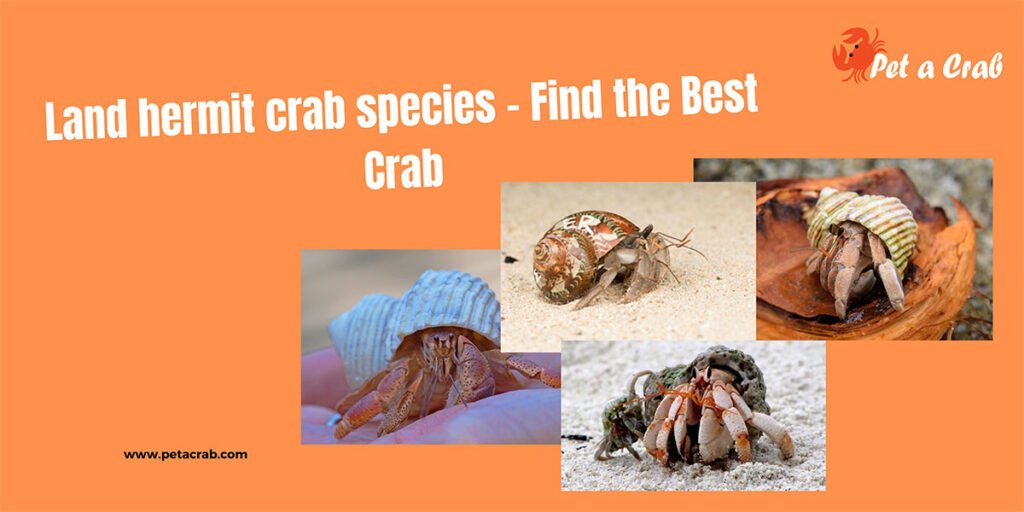Meet the squareback marsh crab, a fascinating little creature that’s quickly gaining popularity as a unique pet. But while their charm is catching on, reliable care information is still hard to find, leaving new owners with more questions than answers.
This guide covers everything you need to know, from their diet and care to their quirky traits. Let’s dive into the world of the squareback marsh crab and uncover all its secrets!
Quick overview of wharf crab
| Common names | Wharf crab, squareback marsh crab, black marsh crab |
| Scientific name | Armases cinereum |
| Size | Up to 4 cm (1.6 inches) carapace width |
| Color | Olive, brown |
| Lifespan | Their lifespan remains unclear, but based on observations of similar species, it could range from 2 to 3 years. |
| Habitat type | Brackish paludarium |
| Temperament | Peaceful/semiaggressive |
| Optimal temperature | 25-30°C |
| Diet | Omnivore |
| Sleeping nature | Nocturnal |
Squareback marsh crab facts
Habitat and Distribution of black marsh crab
The squareback marsh crab, Armases cinereum, thrives in coastal marshes and estuarine environments along the Atlantic coast, from Maryland down to Florida and the Gulf of Mexico. These semi-terrestrial crabs are often spotted in salt marshes, mangroves, and estuaries, where they burrow into the mud or sand for protection.
In northeast Florida, they are commonly found in intertidal zones, which are areas where land meets sea. While they prefer to stay near the water’s edge, they are known to travel inland for food and shelter, making them quite adaptable to various coastal habitats.
Appearance: black marsh crab
Squareback marsh crab has a brown to olive carapace that is square-shaped and smooth, black spines on its legs, and lacks a spine behind its eyes. Males have larger claws than females. The males have a larger claw, which serves as a defense mechanism. Its carapace size is about 1.8 cm long and 2.2–4 cm wide.
Behavior
They burrow into the ground like most of the terrestrial crabs and they hide there during the day since they are nocturnal. Burrows of the wharf crab improve soil aeration and their diet helps decompose organic matter and recycle nutrients.
Marshback land crabs are considered semi-territorial; they warn their enemies with the bigger claw and engage in deadly fights, which can lead to losing claws and even death. They always require moistened gills to breathe air, which is why they reside near a water source.
Interesting facts
- If you pick squareback marsh crabs, they will create bubbles.
- They can make certain acoustic noises. When defending their burrow, male marsh crabs tap their legs together.
- Wharf crab is not poisonous like the mosaic crab, so it is edible. However, edible crabs normally have meaty claws and bigger size. As they are pretty small, I wouldn’t recommend consuming them.
- They face threats from habitat destruction and climate change, so their habitat should be protected.
Reproduction
The wharf crab has an interesting way of reproducing. During mating, the male passes tiny sperm packets to the female, and she carries the fertilized eggs on her belly until they’re ready to hatch. Between 2,000 and 12,000 eggs can be carried by a single female at a time! When the moment is right—often timed with the moon—she finds water and releases her larvae. The early stages of these microscopic larvae, known as zoeae, are spent floating in the water and feeding on plankton. Over the next few weeks, they grow and change through several stages before finally becoming young crabs.
Squareback marsh crab care
Tank setup for square back marsh crab
Size
15 gallons or more will be enough for the marsh crabs; the bigger the tank, the better chance they get to crawl and thrive happily. If the tank is small or overcrowded, they may engage in fights over territories. Keeping one in a small tank will not be a problem but keeping it alone is not recommended. If you have a pair, consider keeping one male and one female; if you have more than two crabs, it is advisable to keep more females than males, since males are more likely to engage in fights.
broughton_taylor
Substrate
The substrate should be 70 to 80 percent and the rest will be water, meaning the tank will be a paludarium.
To maintain high humidity and keep their gills moist, the substrate needs to be able to retain moisture. It should also be able to hold the shape of the burrow.
Create a substrate with sand, gravel, leaf litter and peat moss. That should be good enough as a substrate and it should at least be three inches deep.
Temperature and humidity
Keep the temperature between 25 and 30 °C and humidity between 65 and 85 percent. Use a humidifier, hygrometer, thermometer and heater if necessary. You can mist regularly to keep a high humidity.
Set the light with 12 h day and 12 h night or mimic the natural light cycle. An aquarium LED is perfect for the job.
Read more:
Water requirements
The squareback marsh crab (Armases cinereum) is adaptable to different water salinities. It generally prefers brackish environments (not fully freshwater and not fully saltwater), thriving in Waters that have a salinity of approximately 30 parts per thousand (ppt) and are close to typical seawater levels.
However, it can survive in a wide range of salinities, from fresh to saltwater. Place two bowls of water if possible, one with freshwater and the other with brackish, which is a similar water condition for hermit crabs. My preference is to create a brackish water paludarium as usual and place a freshwater bowl.
Despite its broad tolerance, its larvae, especially in the final megalopa stage, need estuarine conditions with salinities close to 26.7 ppt for the best survival rates. The larvae’s need for specific salinity levels during development likely influences the locations of adult populations.

Tip: Use reef salt to create DIY saltwater, as regular salt contains iodine and other chemicals harmful to the crabs.
Decoration
To mimic their natural habitat, plant some live plants and mosses, such as club moss, feather moss, fern moss, tillandsia, clearweed, and terrarium grass. There is a high chance they will destroy and eat plants. So choose fast-growing crab and avoid toxic plants like snake plants.
Plants will serve their hiding purpose partially; additionally, you should place some hiding places like DIY caves or different types of caves from Amazon, such as spongebob pineapple home.
Squareback marsh crab diet/eating
Squareback marsh crabs are omnivorous. In the wild, their diet includes both animal and plant matter, such as detritus, decaying leaves, cordgrass, carrion, insects and small invertebrates like small fiddler crabs and marsh periwinkle snails. Although they are omnivores, they prefer a carnivorous diet.
In captivity, you can feed them hermit crab pellets, fish pellets or food made specially for crustaceans. Complement their diet with fruits and vegetables like zucchini, cucumber, spinach and strawberries. Prefer feeding brine shrimp and bloodworms and other types of meat, especially chopped fish.
A study shows that wharf crabs grow better when they get a mix of foods, especially if their diet includes invertebrates.1
They may keep the food to rot and then eat it; that’s not a problem but remember, rotten food can bring mites. Give them a calcium source like cuttlebone, which is crucial for a strong shell, especially when they are molting.


